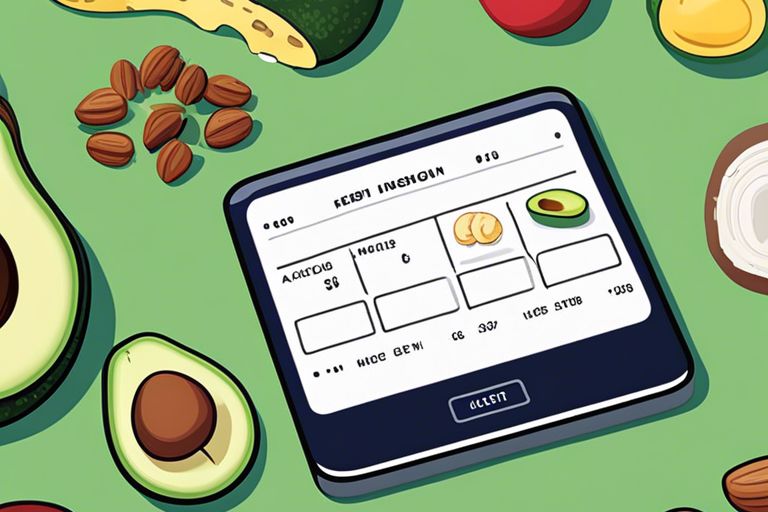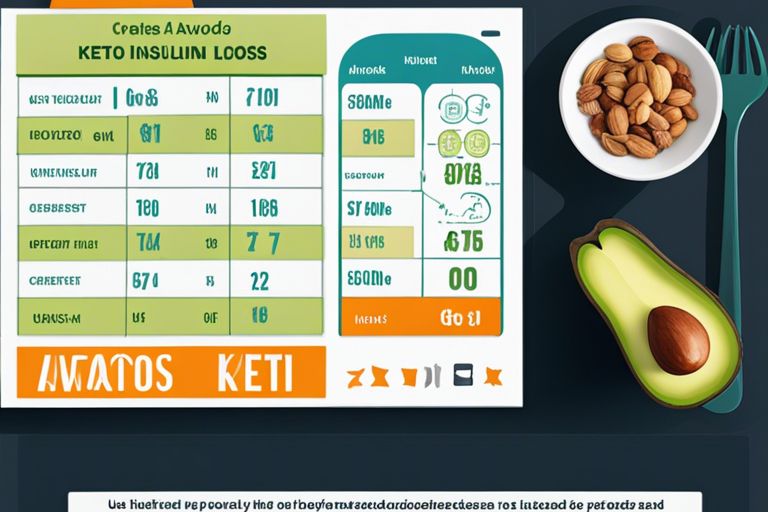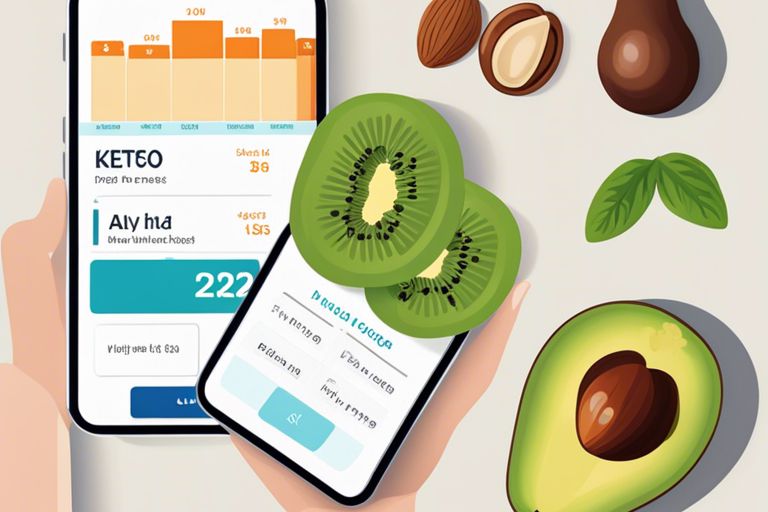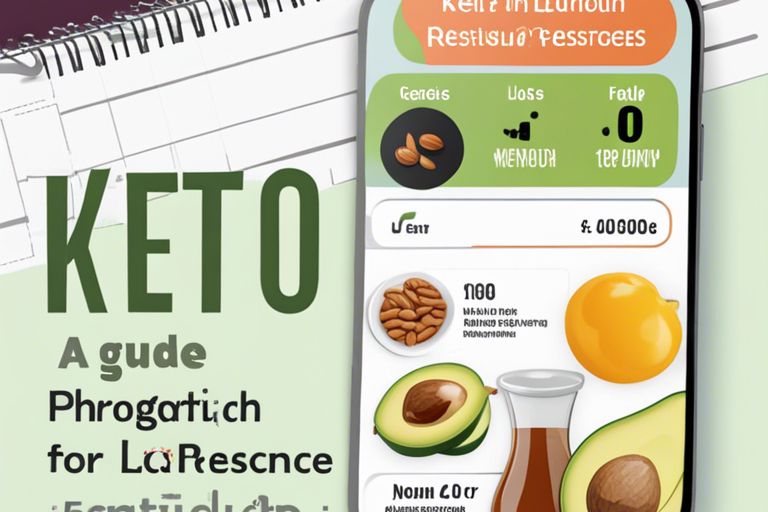Is your battle with insulin resistance hindering your weight loss goals? Look no further than the ketogenic diet. This high-fat, low-carb eating plan has gained popularity for its ability to not only promote weight loss, but also help manage insulin resistance. In this comprehensive guide, we will delve into the science behind keto’s impact on insulin resistance, as well as provide practical tips and meal ideas to help you kickstart your keto journey. Say goodbye to insulin resistance and hello to a healthier, slimmer you with our expert guide to keto for insulin resistance and weight loss.
Key Takeaways:
- Keto Diet Benefits: The keto diet has shown significant benefits for individuals with insulin resistance, including improved insulin sensitivity, reduced blood sugar levels, and weight loss.
- Low Carb, High Fat Diet: The key to success on a keto diet for insulin resistance is to consume low carb, high fat foods to shift the body into a state of ketosis, where it burns fat for energy instead of glucose.
- Importance of Macros: Tracking macronutrient intake is crucial for managing insulin resistance on a keto diet, with a focus on consuming adequate fat, moderate protein, and minimal carbohydrates.
- Meal Planning and Preparation: Planning and preparing keto-friendly meals and snacks is essential for maintaining adherence to the diet and managing insulin resistance effectively.
- Regular Physical Activity: Incorporating regular physical activity, such as resistance training and cardiovascular exercise, can complement the keto diet in managing insulin resistance and promoting weight loss.

The Science of Keto and Insulin Resistance
Some of the key principles behind the ketogenic diet and its relationship to insulin resistance lie in the science of how our bodies process and respond to different macronutrients. Understanding these concepts is crucial in order to fully grasp the potential benefits of a keto diet for insulin resistance and weight loss.
How Keto Affects Blood Sugar Levels
To understand how the ketogenic diet can impact insulin resistance, it’s important to first consider how it affects blood sugar levels. When you consume carbohydrates, they are broken down into glucose, which then enters the bloodstream and raises blood sugar levels. In response, the pancreas releases insulin to help transport the glucose into cells for energy. However, on a keto diet, the intake of carbohydrates is significantly reduced, which in turn leads to lower blood sugar and insulin levels.
This reduction in blood sugar and insulin levels can help improve insulin resistance, as it reduces the demand for insulin production and allows the body to better regulate blood sugar levels. This can ultimately lead to improved metabolic health and weight management for individuals with insulin resistance.
Benefits of Ketosis for Insulin Sensitivity
Sensitivity to insulin is crucial for maintaining healthy blood sugar levels and overall metabolic function. By following a ketogenic diet and achieving a state of ketosis, individuals with insulin resistance can experience improved insulin sensitivity. This means that their cells become more responsive to the effects of insulin, allowing for better uptake of glucose from the bloodstream.
Improving insulin sensitivity through ketosis can lead to better blood sugar control, reduced risk of developing type 2 diabetes, and improved weight management. Additionally, it can also lead to a decrease in inflammation and improved energy levels, all of which are important factors for individuals with insulin resistance.
Blood sugar control, insulin resistance, metabolic health, ketogenic diet, weight management, type 2 diabetes, inflammation
Implementing the Keto Diet for Weight Loss
Any individual looking to implement the keto diet for weight loss needs to first understand the basics of the ketogenic diet. This high-fat, low-carbohydrate diet has shown promising results for individuals with insulin resistance and those looking to shed excess weight.
One of the key factors in successfully implementing the keto diet for weight loss is structuring a meal plan that supports this way of eating. This includes understanding which foods to embrace and which to avoid, as well as finding a balance that works for your lifestyle and goals.
Structuring Your Keto Meal Plan
For those new to the keto diet, it’s important to plan your meals around high-fat, moderate-protein, and low-carb foods. This means incorporating foods such as avocados, olive oil, fatty fish, and non-starchy vegetables into your daily meals. It’s also essential to limit your intake of high-carb foods like bread, pasta, and sugary snacks. By strategically planning your meals, you can ensure that your body enters a state of ketosis, where it begins to burn fat for fuel.
Another aspect of structuring your keto meal plan is finding a routine that works for your schedule and preferences. This might involve batch cooking and meal prepping for the week, or simply keeping keto-friendly snacks on hand for when hunger strikes. Whether you’re a busy professional, a parent, or an athlete, tailoring your meal plan to fit your lifestyle is crucial for long-term success on the keto diet.
Key Foods to Embrace and Avoid
Foods to embrace on the keto diet include healthy fats such as coconut oil, grass-fed butter, and nuts and seeds. Incorporating these into your meals can help keep you feeling satisfied and provide essential nutrients for overall health. On the other hand, foods to avoid or limit include refined carbohydrates like white bread and sugary treats, as well as starchy vegetables like potatoes. By being mindful of these key foods, you can better control your insulin levels and support weight loss on the keto diet.
To further enhance the effectiveness of the keto diet for weight loss and insulin resistance, it’s important to emphasize whole, nutrient-dense foods while cutting out processed and high-carb options. By doing so, you can optimize your body’s ability to burn fat and improve your metabolic health.
Overcoming Challenges and Plateaus
After successfully implementing a ketogenic diet for insulin resistance and experiencing initial weight loss, many individuals may encounter challenges or plateaus in their journey. It is important to understand these obstacles and have strategies in place to continue making progress towards your health goals.
Common Obstacles in Keto for Insulin Resistance
Resistance to insulin can present challenges when following a keto diet. Some common obstacles include:
| Obstacle | Strategy |
| Weight loss plateau | Implement intermittent fasting or adjust macronutrient ratios |
| Cravings and appetite dysregulation | Focus on eating whole, nutrient-dense foods and consider incorporating supplements like chromium and magnesium to support blood sugar regulation |
| Sluggish metabolism | Incorporate high-intensity interval training and prioritize adequate sleep and stress management |
Advanced Strategies for Continued Weight Loss
Loss of weight can be challenging to maintain, especially for individuals with insulin resistance. To continue seeing progress, consider implementing the following advanced strategies:
- Implement cyclical ketogenic dieting to prevent metabolic adaptation
- Experiment with targeted ketogenic dieting to support performance during workouts
- Include strategic carb refeeds to support hormone regulation and prevent metabolic slowdown
Any adjustment to your ketogenic diet should be personalized and monitored closely to ensure it aligns with your health goals and individual needs. It is important to consult with a healthcare professional or registered dietitian before making significant changes to your diet plan.

Monitoring Progress and Adjusting Your Plan
Your keto journey requires careful monitoring to ensure success. Keep an eye on your progress and be ready to adjust your plan as needed. Here’s how to do it.
Tools for Tracking Your Journey
One of the most important tools for tracking your keto journey is a food diary. This helps you keep track of your macronutrient intake and makes it easier to spot any patterns or habits that may be hindering your progress. Another useful tool is a blood glucose monitor, which can help you track changes in your insulin levels and assess your body’s response to different foods. Beyond that, consider using a body composition scale to monitor changes in your muscle mass, body fat percentage, and overall weight.
When to Tweak Your Keto Approach
When your weight loss stalls or you experience a plateau, it may be time to tweak your keto approach. Pay attention to your energy levels, mood, and any signs of insulin resistance. Also, watch for any changes in your measurements, as this can indicate the need for adjustments to your plan. These may include changes to your macronutrient ratios, meal timing, or types of exercise.
When your progress stalls, it’s important to evaluate your habits and make adjustments as needed. Any changes to your keto approach should be made gradually and with careful consideration of your specific needs and goals. Consult with a healthcare professional or nutritionist for personalized guidance.

Conclusion
Taking this into account, it is clear that a ketogenic diet can be an effective strategy for managing insulin resistance and promoting weight loss. By understanding the role of insulin in the body and making appropriate dietary adjustments, individuals can experience significant improvements in their health and well-being. To further explore the connection between keto and insulin resistance, check out this article on Two Reasons Why the Ketogenic Diet Causes Insulin ….
FAQ
Q: What is insulin resistance?
A: Insulin resistance is a condition in which your body’s cells do not respond properly to insulin, leading to high levels of glucose in the blood. This can increase the risk of type 2 diabetes and other health problems.
Q: How does the keto diet help with insulin resistance?
A: The ketogenic diet, or keto diet, focuses on consuming low-carbohydrate, high-fat foods. This helps to lower blood sugar levels and improve insulin sensitivity, making it an effective approach for managing insulin resistance.
Q: Can the keto diet lead to weight loss for individuals with insulin resistance?
A: Yes, the keto diet can contribute to weight loss for individuals with insulin resistance. By reducing carbohydrate intake and increasing fat consumption, the body shifts into a state of ketosis, leading to more efficient fat burning and sustainable weight loss.
Q: Are there any potential risks or challenges associated with the keto diet for insulin resistance?
A: Some individuals may experience initial side effects, often referred to as the “keto flu,” as the body adjusts to the dietary changes. It’s important to consult with a healthcare professional before starting the keto diet, especially if you have underlying health conditions.
Q: What are some recommended foods for a keto diet to address insulin resistance?
A: Foods to focus on include avocados, nuts, seeds, non-starchy vegetables, fatty fish, and healthy oils such as olive oil and coconut oil. These items can help maintain stable blood sugar levels and support insulin regulation.
Q: How can exercise complement a keto diet for insulin resistance and weight loss?
A: Regular physical activity, including both aerobic and strength training exercises, can complement the effects of the keto diet by further improving insulin sensitivity and promoting weight loss. It’s essential to find a balance of exercise that aligns with your individual needs and capabilities.
Q: Is the keto diet sustainable for long-term management of insulin resistance and weight loss?
A: The keto diet can be sustainable for many individuals, but it’s important to monitor overall health and make adjustments as needed. Some people may choose to transition to a modified low-carb diet or incorporate periodic “keto breaks” to maintain progress and prevent potential nutrient deficiencies.

Leave a Reply